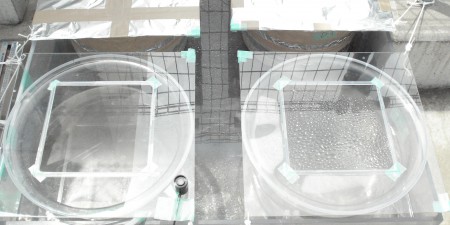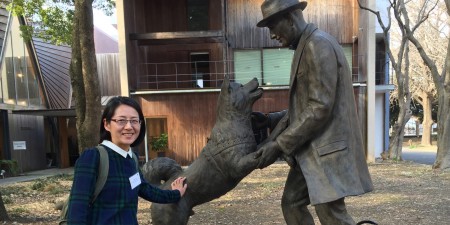Publication: Bacterial enhancement of gel particle coagulation in seawater
Polymers produced by phytoplankton and bacteria are abundant in seawater. The self- assembly of these polymers may result in the spontaneous formation of gel particles (size: from a few to hundreds µm). Gel-particles further stick together to form larger aggregates, which may settle rapidly and hence play important roles in the vertical delivery of organic carbon to the depth. However, the factors that control coagulation of gel-particles in seawater have yet to be clarified fully, In this study, we investigated whether bacteria affect gel-particle coagulation in seawater. Experiments were conducted using rotation tubes to determine time course changes in gel-particle abundance and size distribution. We found that gel-particles were rather stable with no detectable formation of larger aggregates in the sterile control, whereas gel-particles were extensively coagulated to form large aggregates in the treatment with natural bacterial assemblages. These results indicate that marine bacterial assemblages substantially enhanced gel particle coagulation. Other experiments using isolated bacterial strains belonging to the genus Pseudoalteromonas indicated that some, but not all of, the isolates enhanced gel-particle coagulation. Thus, marine bacteria appear to enhance the formation of large aggregates in a species-specific manner. Future studies should examine genetic and molecular basis of the gel particle coagulation enhancement by marine bacteria.
Yamada Y., Fukuda H., Tada Y., Kogure K. and Nagata T. (2016) Bacterial enhancement of gel particle coagulation in seawater Aquat. Microb. Ecol. | doi: 10.3354/ame01784 (In press)
Formation of large aggregates due to coagulation of gel particles. Coagulation occurred in seawater with live bacteria assemblages (as seen here) but not in the sterile control. A, B, and C (from left to right) are 0 h, 48 h, and 96 h after the incubation, respectively. At 96 h, all the gel particles coagulated to form one big aggregate with an approximate diameter of 1 cm. Scale bar: 1 cm.


